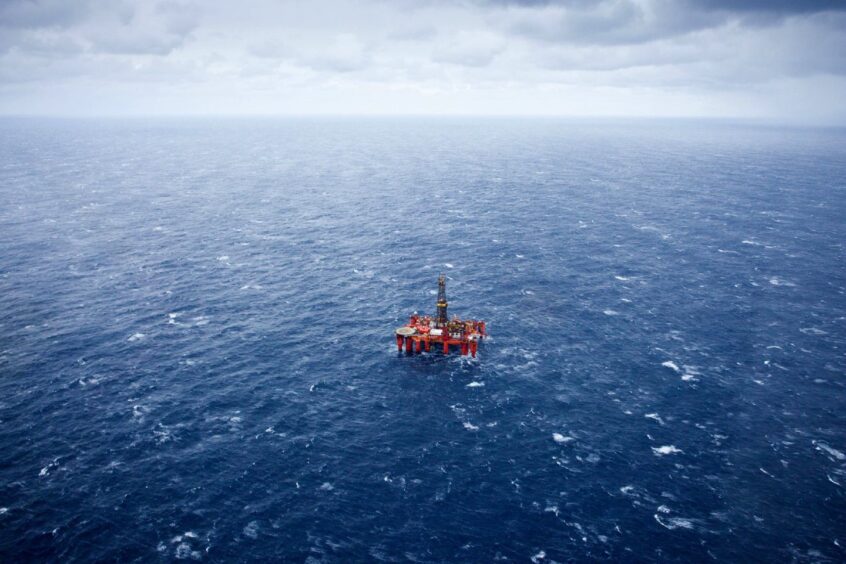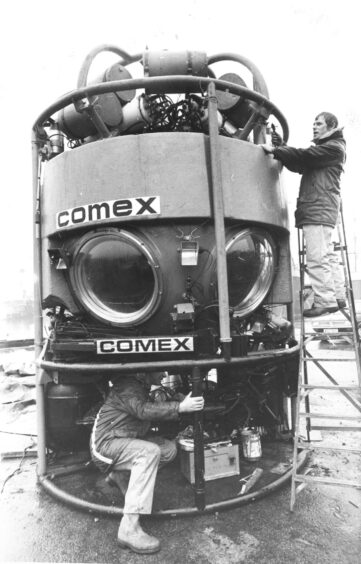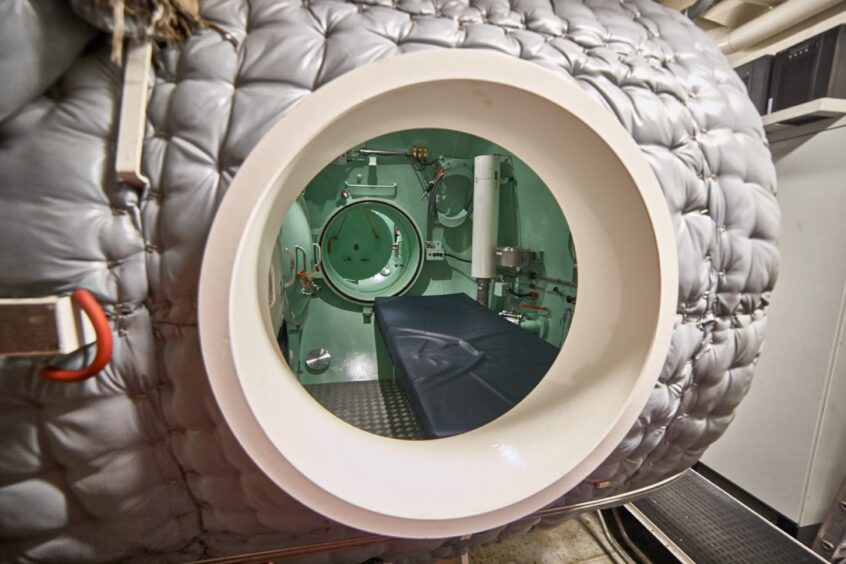
On 5 November 1983 an explosive decompression incident during a diving operation on the Byford Dolphin rig claimed the lives of five people.
Some forty years on, the accident – the terrible circumstances of which are well documented – remains among the worst in the history of modern commercial diving.
Those killed included British divers Edwin Arthur Coward (35) and Roy Lucas (38) as well as Norwegian nationals Bjørn Giæver Bergersen (29) and Truls Hellevik (34).
They were assisted on deck by dive tenders William Crammond (32) – who was also killed – and Martin Saunders who survived with serious injuries.
Bryan McGlinchy, diving manager at the International Marine Contractors Association (IMCA) which represents the offshore dive sector, joined the industry earlier that same year. He later worked for a variety of diving contractors in the Middle East, India, North Sea, and West Africa before joining the Health and Safety Executive as an inspector, and later IMCA.
“The true pioneer days of North Sea diving were in the 1970s – that was when it was like the Klondike.”
While there had been several fatal diving accidents in the North Sea’s pioneering but loosely regulated heyday, Mr McGlinchy says the nature of the operations meant only one or two people were typically diving at once. That changed with advancements in saturation diving.
“It made a huge impact to lose five men in one explosive decompression incident and for the other tender to be so badly injured. It was massive,” he explained.
“And what it did was really underline the potential in saturation diving for a single major accident to cause multiple fatalities.”
Safety lessons
The cause of the accident was a locking mechanism which sealed trunking between the diving bell and the chamber on deck. The locking device was opened from outside, unlatching the bell from the chamber while the system was still under pressure and while an internal door remained open, ultimately blasting the bell across the deck.
The action was later blamed on fatigue, potential miscommunication and poor routines – crew had reportedly been working for more than 12 hours – though exact factors behind the decision to unlatch the system were precluded by the fatal nature of the accident.
Notably however, the equipment used on the operation also dated from 1975 and was not equipped with more modern fail-safes – most crucially an interlocking mechanism, which would have prevented the trunk from being opened while under pressure.
By the time Mr McGlinchy entered the industry there was greater professionalisation of the diving sector since the pioneering 1970s, aided by the UK’s 1981 diving regulations which set firm guidance on how to operate safely.
“The fact that there was no interlock on the locking mechanism was immediately apparent, and now the presence of appropriate safety interlocks on sat diving systems has perhaps the highest priority of all safeguards.
“The accident brought home to everybody that the transfer under pressure (TUP) between the bell and the chamber complex on the surface – that is a critically high-risk part of the operation that you’ve got to get right every time.”
Norwegian rules requiring interlock mechanisms were coming into force prior to 1983, but the move had yet to be implemented across all equipment. One month after the accident, the rule was reportedly made final for all bell systems.
Human error
Beyond safety legislation, the incident also carried a profound cost for the relatives of those involved, who said they had received no support or compensation. In addition, the initial blame apparently placed on some individuals involved caused severe distress.
Mr McGlinchy said the latter in particular is a vital consideration when thinking about how health and safety lessons are learned from such events.
“What the Health and Safety Executive does in this country is it doesn’t look to blame individuals. We’ve all made mistakes. Human error, we are all prone to it.
“What you’ve got to do is consider the human being in the system and not put those persons in a position where an understandable human error could lead to very serious consequences. Our safety systems must be designed to be tolerant of human error.”
Safety guidance should seek to address “latent failures” in systems to ensure risks are controlled to a level as low as reasonably practicable (ALARP) he said, something that modern offshore diving legislation and IMCA guidance recognises. The absence of a suitable interlock on the Byford Dolphin diving system was a significant latent failure in the system, and that latent (unobserved) failure was the main reason for the accident.
“We always work to try to reduce risk to ALARP. The industry has worked massively hard to improve diving safety, and the training of divers and diving supervisors has greatly improved from the pioneer times. Today, the principles of safe diving practice are very well known and very well observed.”
“The attitude has completely changed. When that clamp was opened and was still under pressure – that could have happened to anyone in the absence of an interlock.
“Blaming individuals is not the way to improve safety.”
Families of several divers killed in accidents in Norway called for further investigations via the North Sea Divers Alliance, and following legal action the Norwegian government later offered a settlement in 2009.
Meanwhile the Byford rig itself remained in operation until a few years ago, before being scrapped in 2019.
Legacy
While the legal ramifications of the Dolphin incident have hopefully been put largely to rest, its legacy is still felt amongst the community and in the high safety standards set for diving operations.
“The Byford Dolphin is still I think the single largest loss of life in offshore oil and gas for diving and, it did catalyse safety improvements in the diving industry,” he said, likening the impact to that of the Piper Alpha disaster five years later in 1988.
He noted that the Cullen Report, produced in the aftermath of Piper, also recommended the preparation of safety cases that included diving operations – something he believes may well have been informed by the likes of high-profile diving accidents.
“It’s a dreadful thing that this accident happened, but most assuredly, very valuable lessons were learned from it – and not just by industry, but by the legislators as well.
“Really the Byford Dolphin and all these other incidents where divers lost their lives is what our diving safety guidance at IMCA has been built upon.
“And the legislation in all those countries that have mature, sensible diving regulations today have literally been built upon learnings from the mistakes and tragedies of the past, and in particular all those incidents that cost so many divers their lives in the 70s and 80s.”
Efforts to better recognise this are underway. Plans have been drawn up to create a memorial in Aberdeen to pay tribute to the nearly 80 North Sea divers who lost their lives over the last 50 years across British, Norwegian, German and Danish waters.
“The offshore North Sea wouldn’t have happened without all sorts of people – helicopter pilots, riggers, cooks – but particularly divers who played an important role in being able to take advantage of the resources that we’ve had over the last five decades,” one of the project’s architects, former diver James McLean, said earlier this year.
The hope is that the industry will dig deep to support the project in the coming months.
Mr McGlinchy also expressed personal gratitude for the legacy of those who went before him.
“The lessons learned from the pioneer days were vital in helping to keep me and all my colleagues safe when we entered the industry. We were youngsters then. That could have been us so easily.”
 © Unknown
© Unknown © Shutterstock / Igor Hotinsky
© Shutterstock / Igor Hotinsky